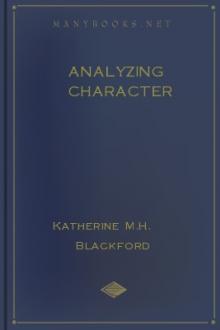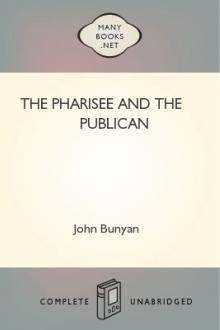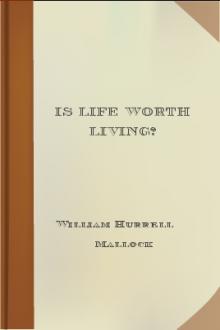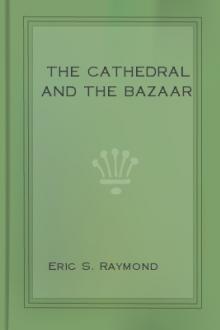Analyzing Character, Arthur Newcomb [popular romance novels .txt] 📗

- Author: Arthur Newcomb
- Performer: -
Book online «Analyzing Character, Arthur Newcomb [popular romance novels .txt] 📗». Author Arthur Newcomb
But grossly deceived are those who imagine that the fire of genius burns away any necessity for drudgery. On the other hand, genius seems to consist very largely of a capacity for almost infinite drudgery. A prominent engineer once said to us that all great inventions which become commercially practicable are the joint product of a genius and a drudge, or rather, of a genius and a corps of drudges. The genius, in a flash of inspiration, conceives a new idea. Having conceived it, he can only sit down and wait for a new inspiration, while the drudges take his idea, work out its details, modify and conform it to conditions, and, finally, harness it to the commercial wagon. This sounded well and has a great deal of truth in it. Yet the most slavish drudge in the Edison laboratories and factories is Edison himself. The hardest worker in all the Westinghouse plant was Westinghouse. And who but the Wright brothers themselves made a commercial success of the aeroplane? Sometimes, it is true, one man conceives an idea which he is unable to work out and which must be made practical by others, but more often than not he stumbles on the idea more by accident than because he is looking for it. So the young man or the young woman who has hopes of winning fame in the world of art, music, or literature should assay himself or herself first of all for a willingness to work, to work hard, and to work endlessly.
INDICATIONS OF ENERGY
Such energy is indicated by the large nose, high in the bridge, which admits large quantities of oxygen into the lungs; by high cheek bones, oftentimes by a head wide just above the ears, by square hands and square-tipped fingers, by hard or elastic consistency of fibre. Persistence and patience are indicated by brunette coloring and plodding by a well-developed and rather prominent jaw and chin. Havelock Ellis and other anthropologists have noted the fact that dark coloring is more frequently found in artists and actors than light hair, eyes, and skin.
Artistic, musical, and literary ability are as various in their indications as they are in their manifestations. One man is a painter, another a sculptor, another an architect. One man paints flowers, another landscapes, another portraits, another allegorical scenes, and still another the rough, virile, vigorous, or even horrible and gruesome aspects of life. One musician sings, another plays the violin, still another the piano, and another the pipe organ. One conducts a grand opera, another conducts a choir. One musician composes lyrics, another oratorios, another ragtime, and still another symphonies. One man writes poetry, another stories, another essays, another history, another philosophy, and still another the hard, dry, mathematical facts of science. Obviously, it would only confuse the reader were we to attempt to describe the physical appearance of all these different classes.
INDICATIONS OF ARTISTIC TEMPERAMENT
In general, we may say that an appreciation of form, color, proportion, size, and distance is indicated by well-developed brows, broad and full at the outer angles, and by eyes set rather widely apart. But size, form, color, and proportion are but the mediums through which the artist's soul conveys its message. Whether or not one has the soul which can conceive a worthy message is indicated by the expression of the eyes, an expression which cannot be described but which, once seen and recognized, can never afterward be mistaken.
Inherent capacity for music is indicated by a forehead wide at the brows. Going over the portraits of all the famous composers and performers, you will find that while they differ in most other particulars, they are all alike in the proportionate width of the forehead at the brows. The kind and quality of music one may create depends partially upon training and partially upon the kind and quality of his soul, which, again, expresses itself in the eyes.
Capacity for literature and expression is indicated by fulness of the eye, by heighth and width of the forehead, and, perhaps, especially by the development of the head and forehead at the sides just above the temples and back of the hair line. Any portrait gallery of great authors will show this development in nine out of ten (see figures).
The artistic, musical, or literary man with fine, silken hair, fine, delicate skin, small and finely chiselled features, and a general daintiness of build will express refinement, beauty, tender sentiments, and sensitiveness in his work, while the man with coarse, bushy or wavy hair, coarse, thick skin, large, rugged features, and a general ruggedness and clumsiness of build, even when his size is small, will express vigor, virility, ruggedness, and even gruesomeness and horror, in his work. There may be in his productions a wild, virile type of beauty, as in the music of Wagner and the sculpture of Rodin, but the keynote of his work is elemental force.
The dilettante has conical hands, with small, tapering fingers; this is the hand which is popularly supposed to accompany artistic temperament. He loves art. He appreciates art. He may even win fame and fortune as a competent critic of art, but he cannot create it. Your true artist has square, competent hands, with blunt, square-tipped fingers. The hands shown in figure 57 page 317 are those of a music lover who can neither play nor sing. Those in figure 58 are the hands of a true artist on the piano and pipe organ. The true producing artist nearly always has square hands, with large thumbs set near the wrist, thus giving a wide reach between tip of thumb and tip of forefinger, as shown in figure 58. Actors and operatic singers sometimes have conical hands, with tapering fingers. They express emotion and beauty with voice, gesture, and facial expression rather than with their hands.
In the world of art and literature many are called but few are chosen. The pathway to the heights is steep and rugged and there are many pitfalls. There are many by-paths. Furthermore, it is cold and lonesome on the mountain-top. Before anyone sets out on the perilous journey he should read Jack London's "Martin Eden," Louis M. Alcott's autobiography, the story of Holman Hunt, the Autobiography of Benjamin Franklin, and the biographies of others who have attained fame in these fields.
CHAPTER X WASTE OF TALENT IN THE PROFESSIONSIn the old days the physician was often a priest. There was mystery, magic, authority, and power in the profession. There were almost royal privileges, prerogatives, robes, insignia, and emoluments.
Humanity sheds its superstitions slowly. Science and common sense have smitten and shattered them for centuries, yet many fragments remain. And so there is still a good deal of mysticism, magic, and awe connected with both the art of healing and the priesthood. Hence, the lure of these professions. Romantic and ambitious youth longs to enter into the holy of holies, looks forward with trembling eagerness to the day when authority shall clothe him like a garment, when his simple-hearted people, gathered about him, will look up to him with adoration in eyes which say, "When you speak, God speaks."
There are other appeals to aspiration in the professions. When the layman seeks for social preferment, he must bring with him either the certificate of gentle birth or the indorsement of his banker. The professional man has a standing, however, far in excess of what he might command as the result of his financial standing.
The profession of law, in like manner, has, in the minds of the common people, always set a man apart from his fellows. About his profession, too, there is the charm of mystery, the thought of thrilling flights of oratory and high adventure in the courts of law, of opportunities for great financial success, and for political preferment.
Of late years the profession of engineering has called to the youth of the land with an almost irresistible voice. The development of steam and gasoline engines, of the electric current, and of a welter of machinery called for engineers. The specialization of engineering practice into production, chemical, industrial, municipal, efficiency, mining, construction, concrete, drainage, irrigation, landscape, and other phases, has still further increased the demand. Some few engineers, by means of keen financial ability in addition to extraordinary powers in the engineering field, have made themselves names of international fame, as well as great fortunes. All these things have fired the ambitions of our youth, and the engineering schools are full.
OVER-CROWDING OF THE MEDICAL PROFESSION
Our colleges and universities, in their academic courses, do not fit their students for business, neither do they fit them for any of the professions. They are graduated "neither fish, nor fowl, nor good red herring," so far as vocation goes. Being an educated man, in his own estimation, the bearer of a college degree cannot go into business, he cannot "go back" into manual labor. So he must go forward. There is no way for him to go forward, so far as he knows, except to enter some technical school and prepare himself for one of the "learned professions."
Go into the graduating class in any college or university, and ask the young men what their plans for the future are. How many of them will reply that they are going into business? How many of them that they are going into agriculture? How many that they are going into manufacturing? Our experience is a very small percentage. Many of them have not yet made up their minds what they will do. The great majority of those who have made up their minds are headed toward the law, medicine, the ministry, or engineering. This is a great pity. Why should the teachers and counselors of these young men encourage them in preparing themselves for professions which are already over-crowded and which bid fair, within the next ten years, to become still more seriously congested? Perhaps the professors do not know these things. If so, a little common sense would suggest that it is their business to find out. Nor would the truth be difficult to learn.
In "Increasing Home Efficiency," by Martha Brensley Bruere and Robert W. Bruere, we read:
"We have pretty definitely grasped the idea that the labor market must be organized, because it is for the social advantage that the trades should be neither over-nor under-supplied with workers; but it seems to shock people inexpressibly to think that the demand for ministers and teachers and doctors should be put in the class with that for bricklayers and plumbers. And yet the problem is quite as acute in the middle class as among the wage-workers. Take the profession of medicine, for instance, a calling of the social value of which there can be no question, and which is largely recruited from the middle class. The introduction of the Carnegie Foundation's Report on Medical Education says:
"'In a society constituted as are our Middle States, the interests of the social order will he served best when the number of men entering a given profession reaches and does not exceed a certain ratio.... For twenty-five years past there has been an enormous over-production of medical practitioners. This has been in absolute disregard of the public welfare. Taking the United States as a whole, physicians are four or five times as numerous in proportion to population as in older





Comments (0)